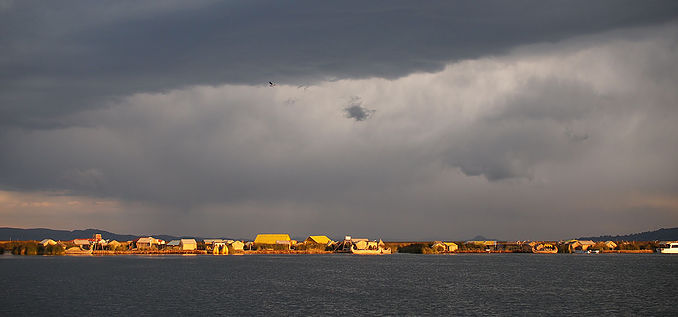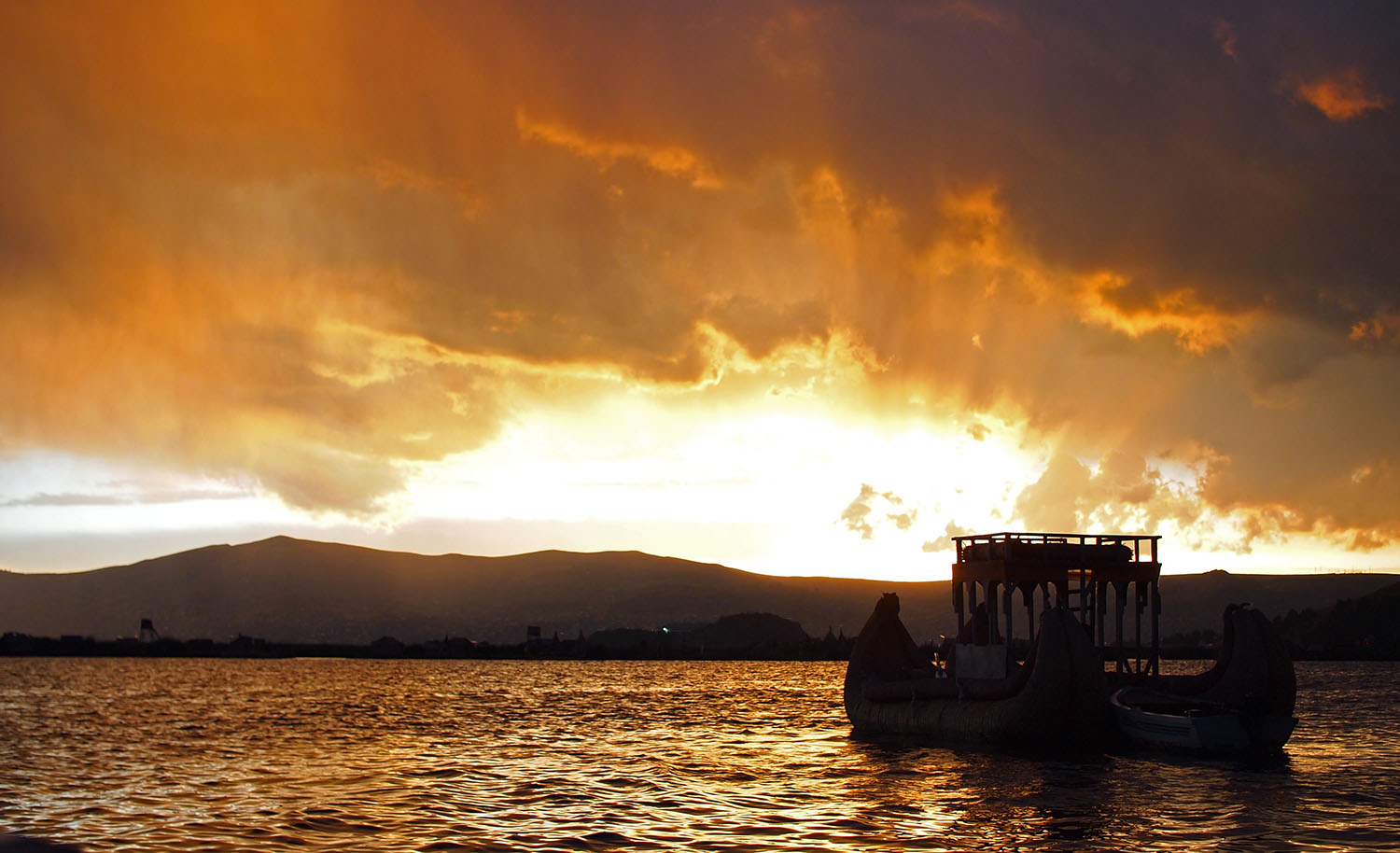I arrived in Sucre, the capital of Bolivia, at 5am after a painfully loud overnight bussride from Uyuni. The guy at the hostel would of course not let me have a bed until 1 pm so I managed to drag myself around the city centre for a few hours. Little did I know this would be the most I would see of the city during my week there.
Now, arriving back at the hostel and finally getting some sleep, it only took till the bar opening hours before I met the group of people that would keep me from being cultural ever again in Bolivia. That’s unless you count Bolivian hostels and clubs as a cultural scene. The hostel, Kulturkafe Berlin, was like an all inclusive cruise ship, you don’t have to leave and you barely can. Party at night, breakfast buffet in the early hours, sleep till evening, order hangover food at the bar, and start the cycle over again. That is except for when my body would not cooperate and I basically had to just skip the whole day.
The hostel was an excellent place for meeting people, and our little group of people grew quickly with new travellers arriving everyday. As people kept extending their stay they would also change rooms to what we ended up calling the “Pit”. It was probably the shittiest room in the whole hostel as you had to walk through the kitchen back yard and over to a hidden away garden only to arrive to a eight bed dorm shed. But for us it was perfect, we had our private little hide away. Being the only girl in the group, I opted out of joining the guys in the Pit for several reasons that shall remain untold. On occasion there would be other people shown to the room, but they either changed dorm or checked out pretty quickly.
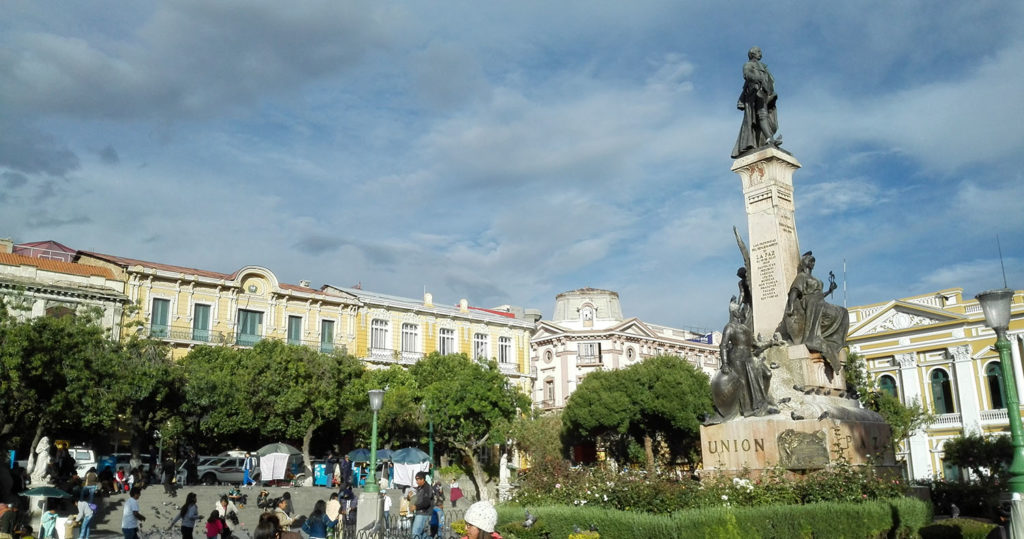
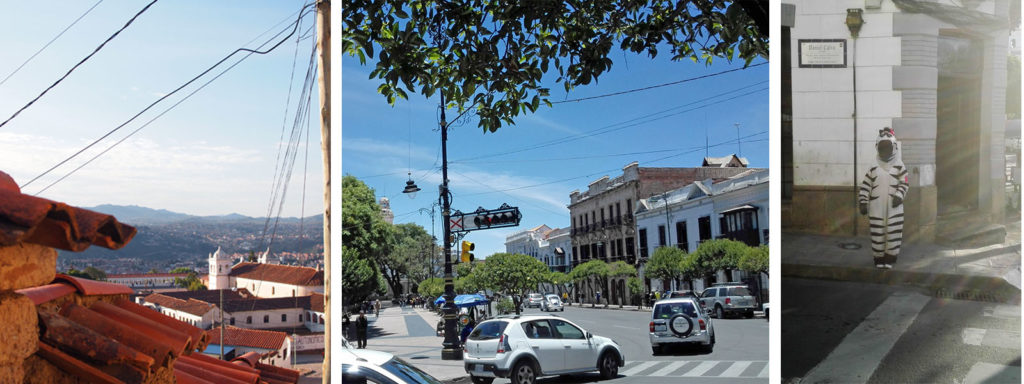
The colonial Sucre city centre. The Zebras would walk around the traffic down town and helping people crossing the street.
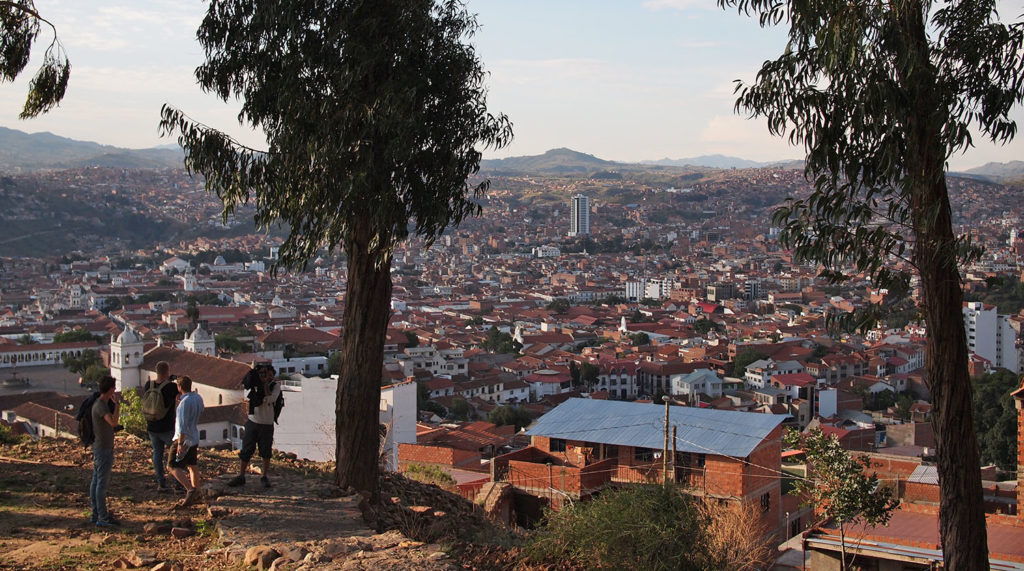
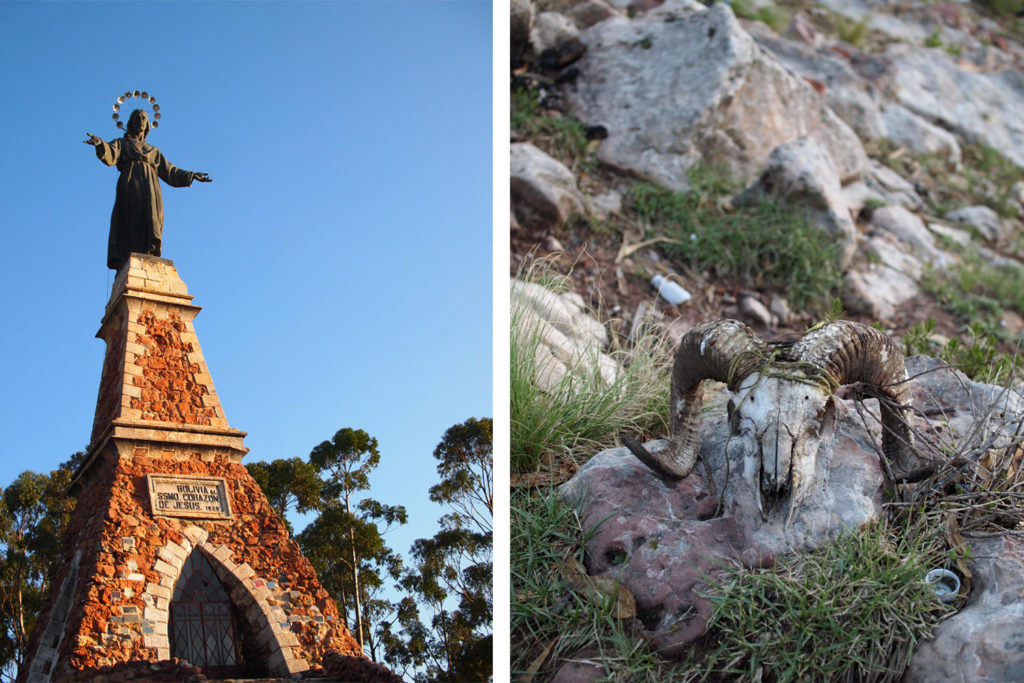
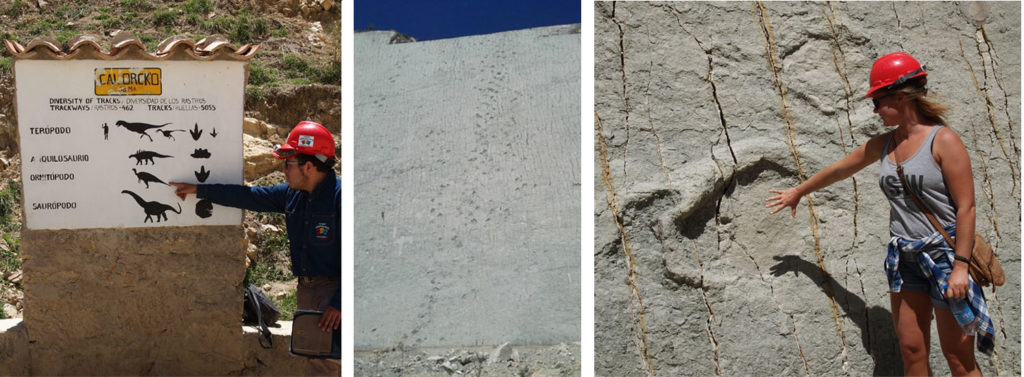
Right next to Sucre city centre one of the largest collections of dinosaur footprints were reveiled not too many years ago. Pity is, the previous muddy ground is falling apart in the rain after being stripped of their protective sand stone layer.
Through more than a week in Sucre, I managed to see a Jesus statue and the Cretacique park. That’s about 4 hours of sightseeing.
When arriving in Bolivia backpacking changes. No locals speak English but you’ve none the less now entered the Gringo Trail. The amount of backpackers you meet increases dramatically as the hubs are fewer, and most people are traveling in one of two directions, either North to South or South to North. And with a limited number of hostels being top rated on the typical booking apps, and rumours spreading of the best places to stay, you’re bound to bump into the same people over and over again. So the backpackers traveling at the same time you are going in the same direction will end up being a part of your trip at some point.
And that’s what happened here. As a group of ten people, meeting either in Uyuni or Sucre, we were now all heading towards La Paz, the next natural stop. And La Paz was basically a repeat of our first week and a half together in Sucre. This time the scene of the crime was Wild Rover, a legendary party hostel, not making it any easier to get around the city and see stuff. The one thing we did manage to do was cycling Death Road. That put a stopper to my partying for at least two days either resting up before or being exhausted by the amount of activity after.
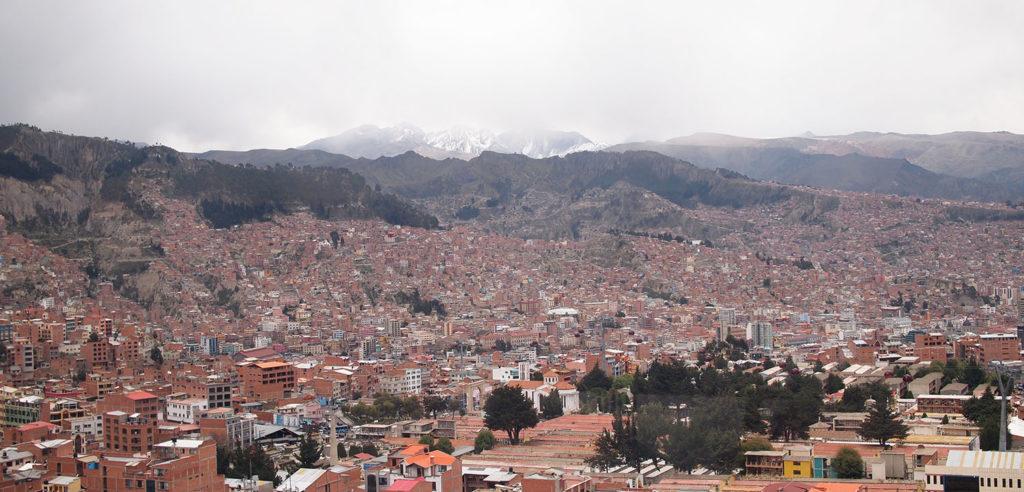
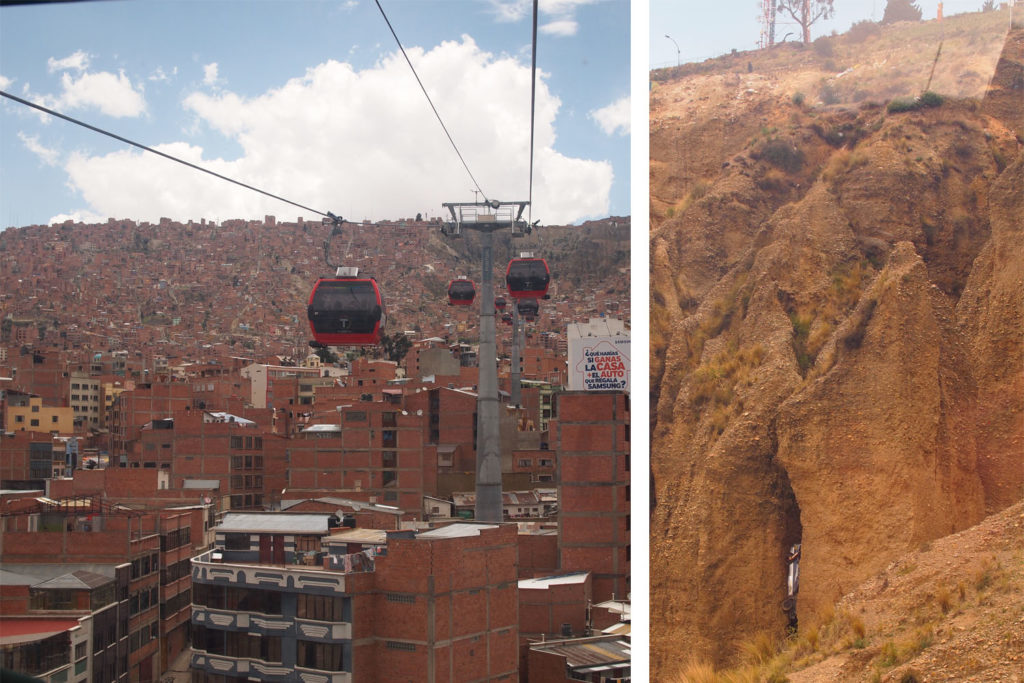
La Paz is a crazy city though, it’s messy, polluted and poor. The buildings are merely raw construction as no one wants to spend on external rendering, resulting in a brown, terracotta brick city. The most impressive aspect is the gondolas used by the city’s population to ascend up the 5xx m to the edges of the city. There is also the Witches market, the touristic souvenir centre, where I proudly made it more than once. You can also get your dried up Llama babies here.
If you’ve ever read the book Marching Powder, you know about the famous prison in the middle of the city centre. It now makes the starting location of walking tours but curious tourists are no longer allowed into the prison. Opting for a slightly different tour, or lecture, we got to meet one of the previous convicts, Crazy Dave, who was hanging around the square steeling customers from the average tours. He told us stories from the prison and about the coke factory still going strong in there. You really don’t need a prison contact for coke in La Paz though, every taxi driver will offer you some at night time. Or you can opt for the safer option of Route 36, a little rave basement where the police knows to look the other way.
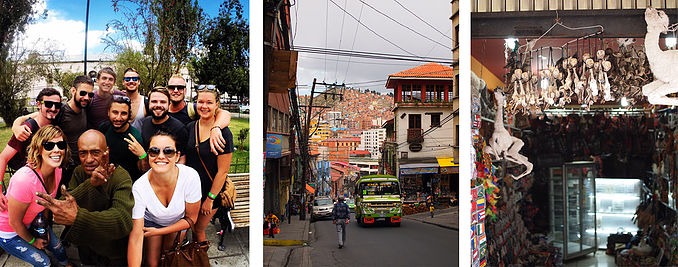
Crazy Dave and the rest of my partners in crime. Right: The withces market sell dried Llamas…
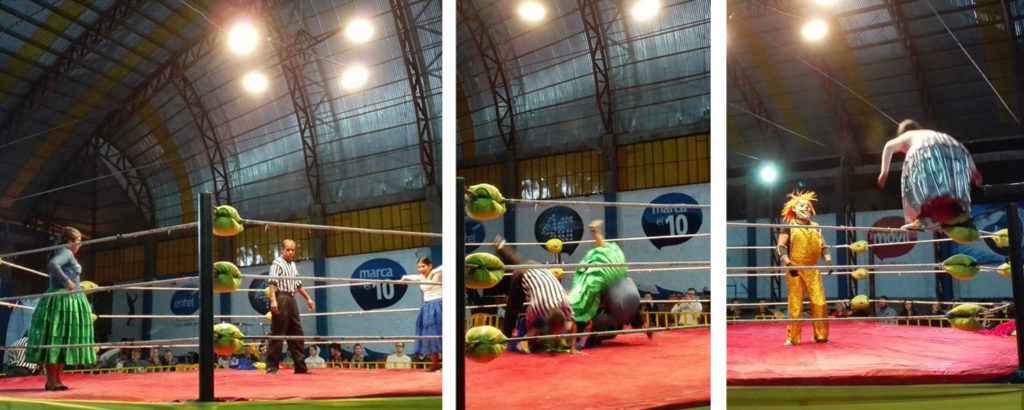
Cholita wrestling, very much a staged show where no rules applied.
So with another all service hostel, I didn’t really see too much of La Paz either, apart from the Cholita Wrestling and Death Road, both very much catering only for tourists. No walking around larger parts of the city, no museums, no cultural activities other than an Irish hostel. That might be why I was really wanting to see Lake Titicaca with Isla del Sol and the floating Islands, an indigenous must see.
I was slightly disappointed. It might have been because we were slightly tired, but Copacabana was not a very impressive town. Catering to tourists, half the town was hotels and restaurants and agents selling Isla del Sol transportation. Isla del Sol is said to be the birthplace of the Gods so I was expecting a breath-taking and serene place, but to be frank, it was just a couple of dry hills. The bitchy locals seemed to be torn between hating the tourists and striving for our business.
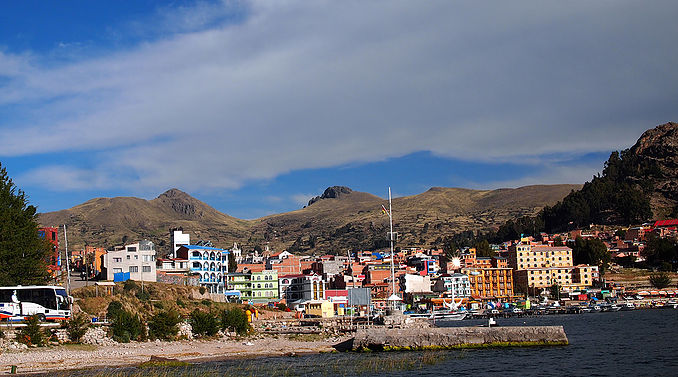
Copacabana
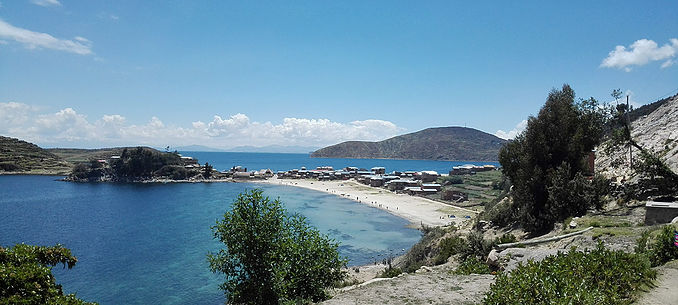
The mythical Isla del Sol
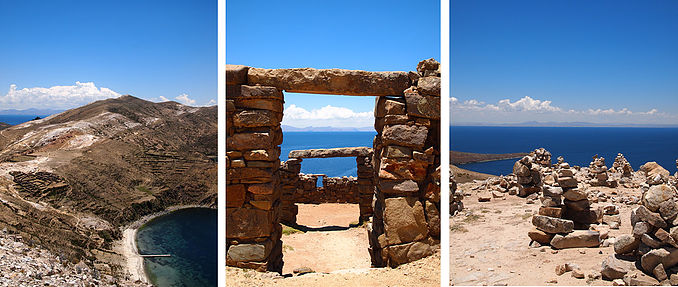
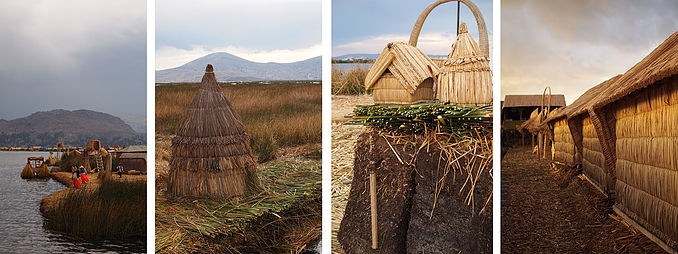
The floating islands of Puna
As a last effort to experience some of the Bolivian culture, we had to cross the border into Peru to the “Indigenous” capital of Puno where we could easily access the biggest floating islands in Lake Titicaca. This also being a run of the mill tourism, we got a full demonstration of how the islands are made and a close look at the indigenous straw houses. At least the tours were focused to a few specific islands and the rest of the locals were seemingly left with some privacy. And although not actually in Bolivia, it felt like the most Bolivian and cultural thing I got to experience.
